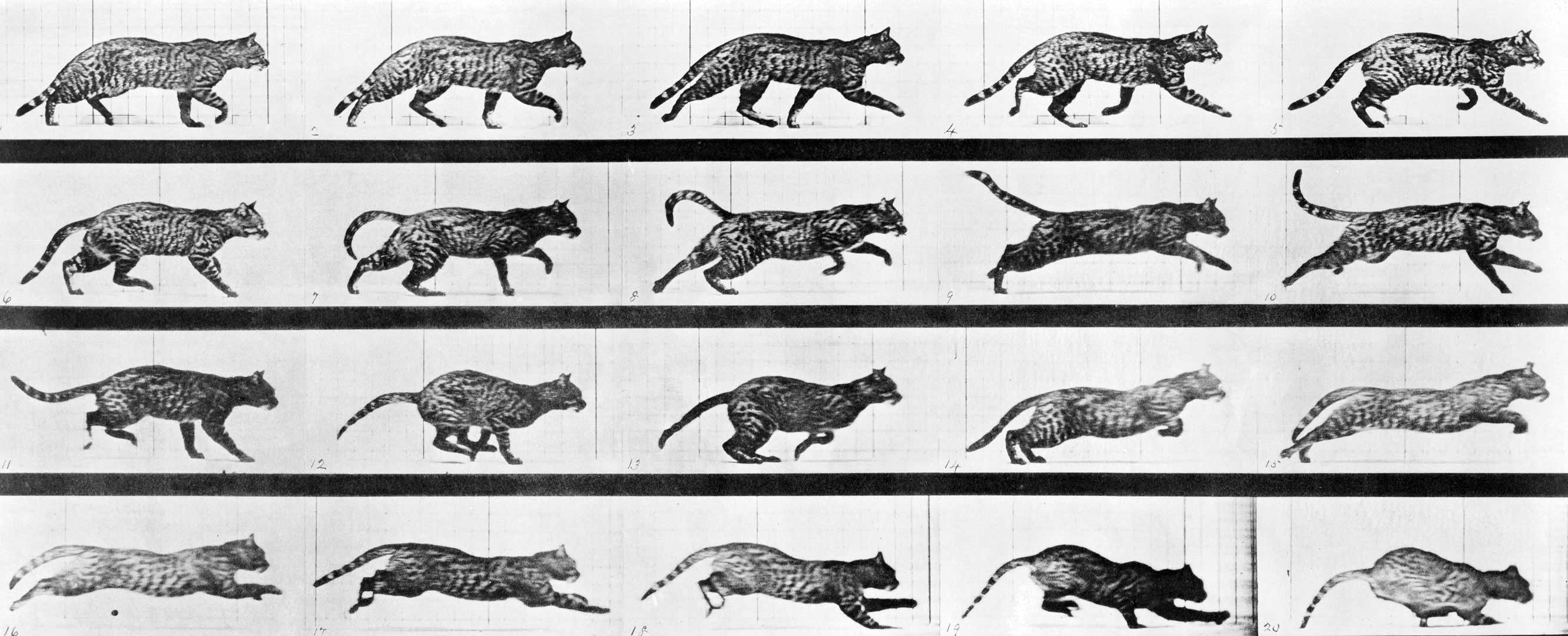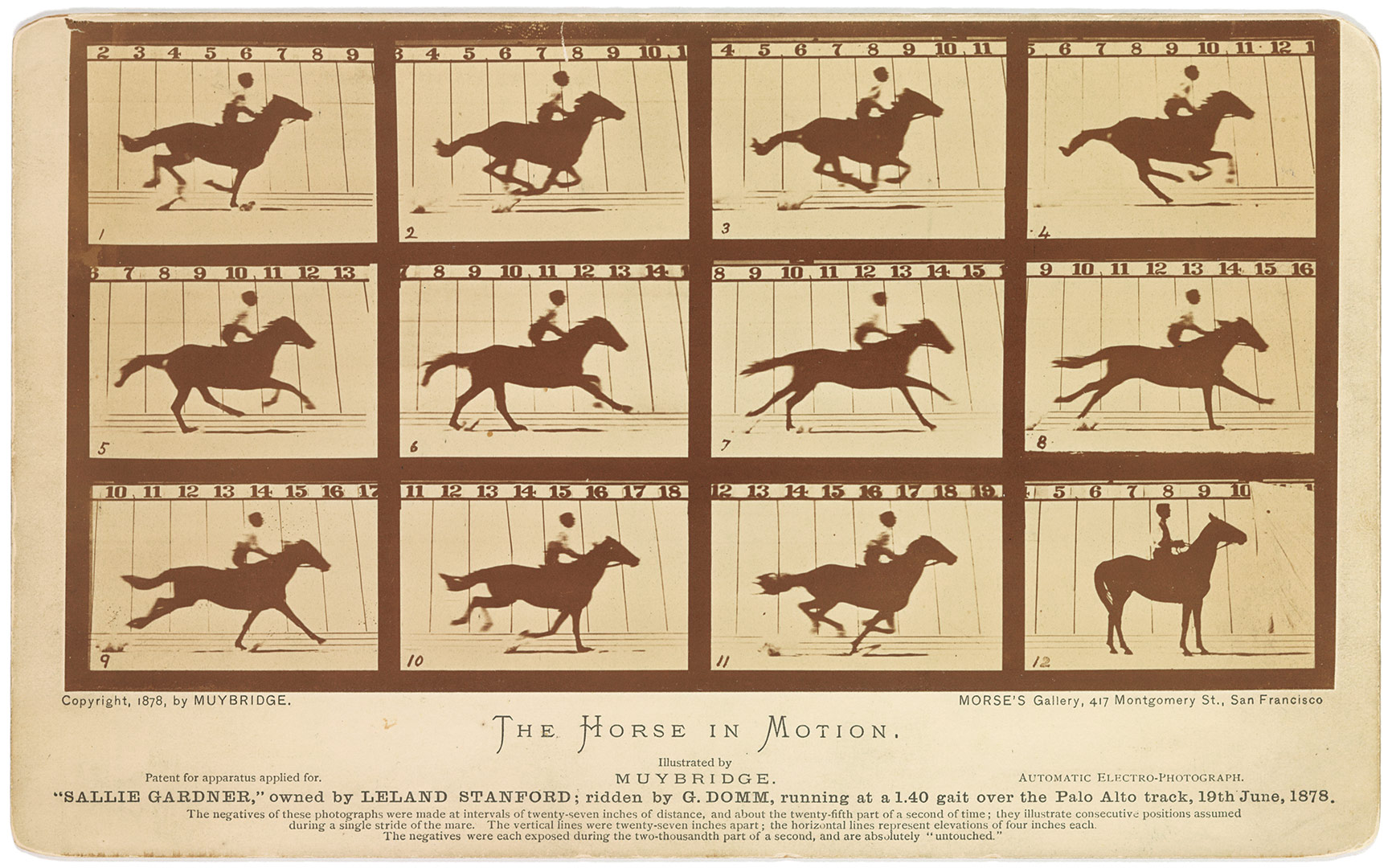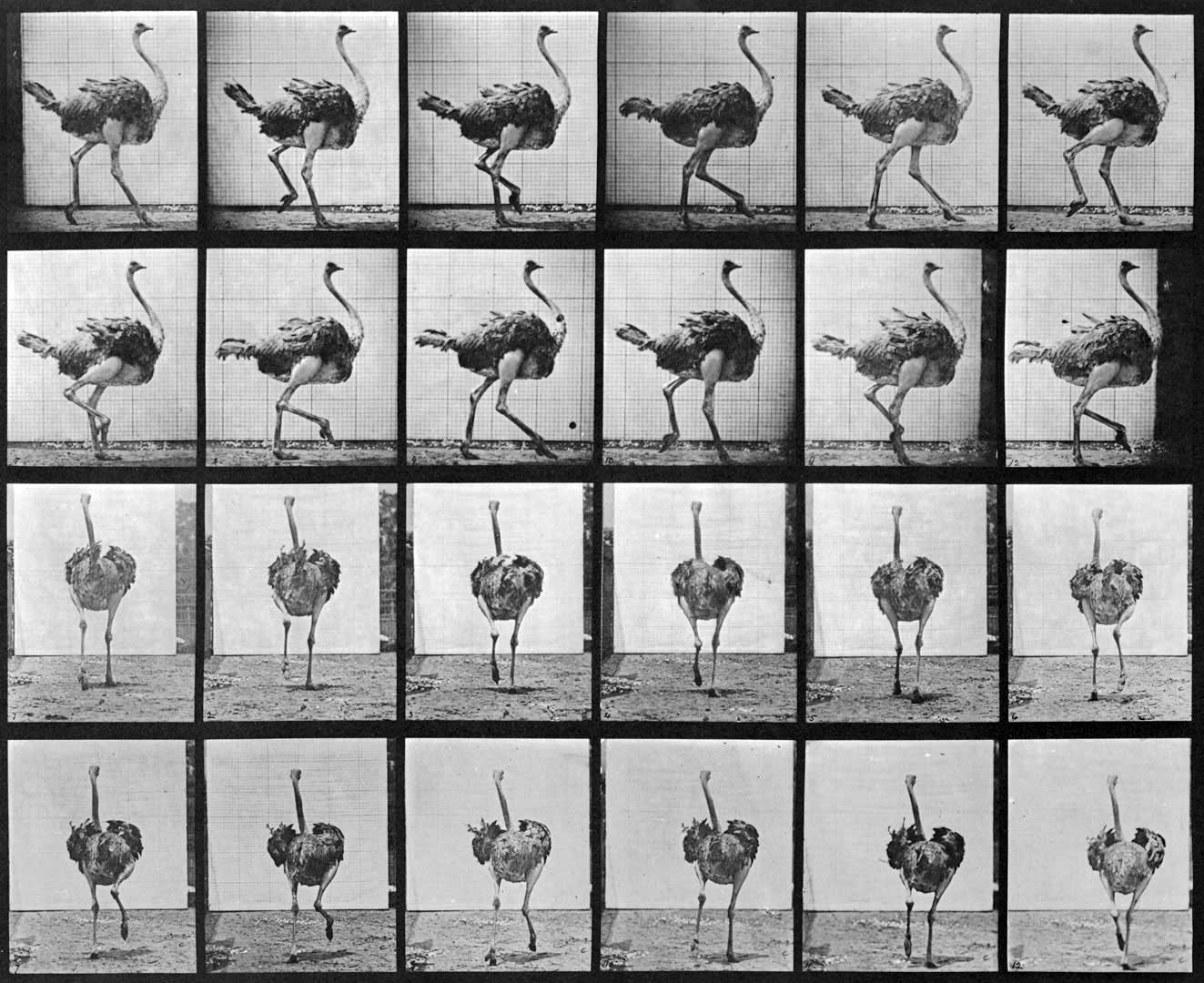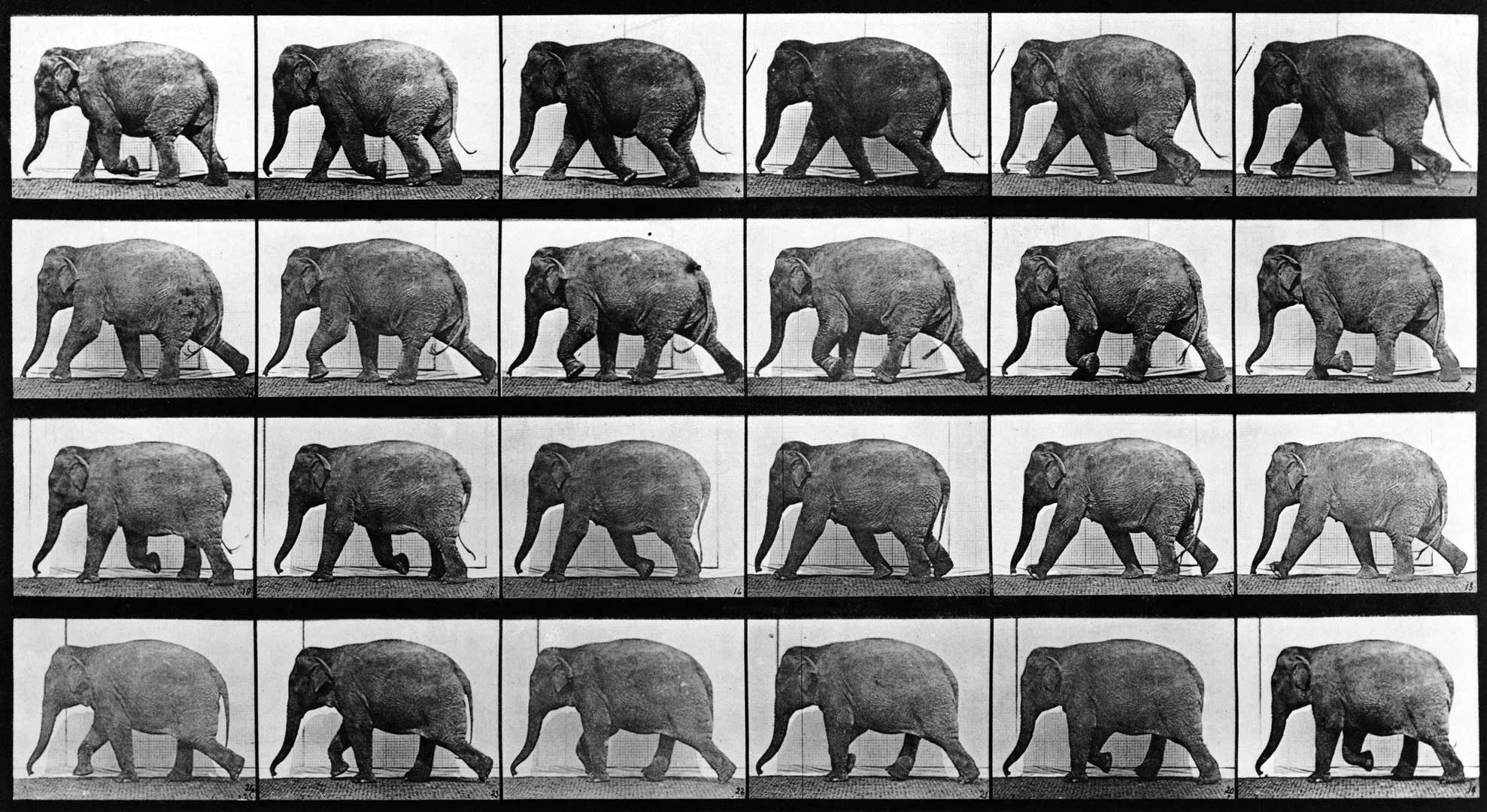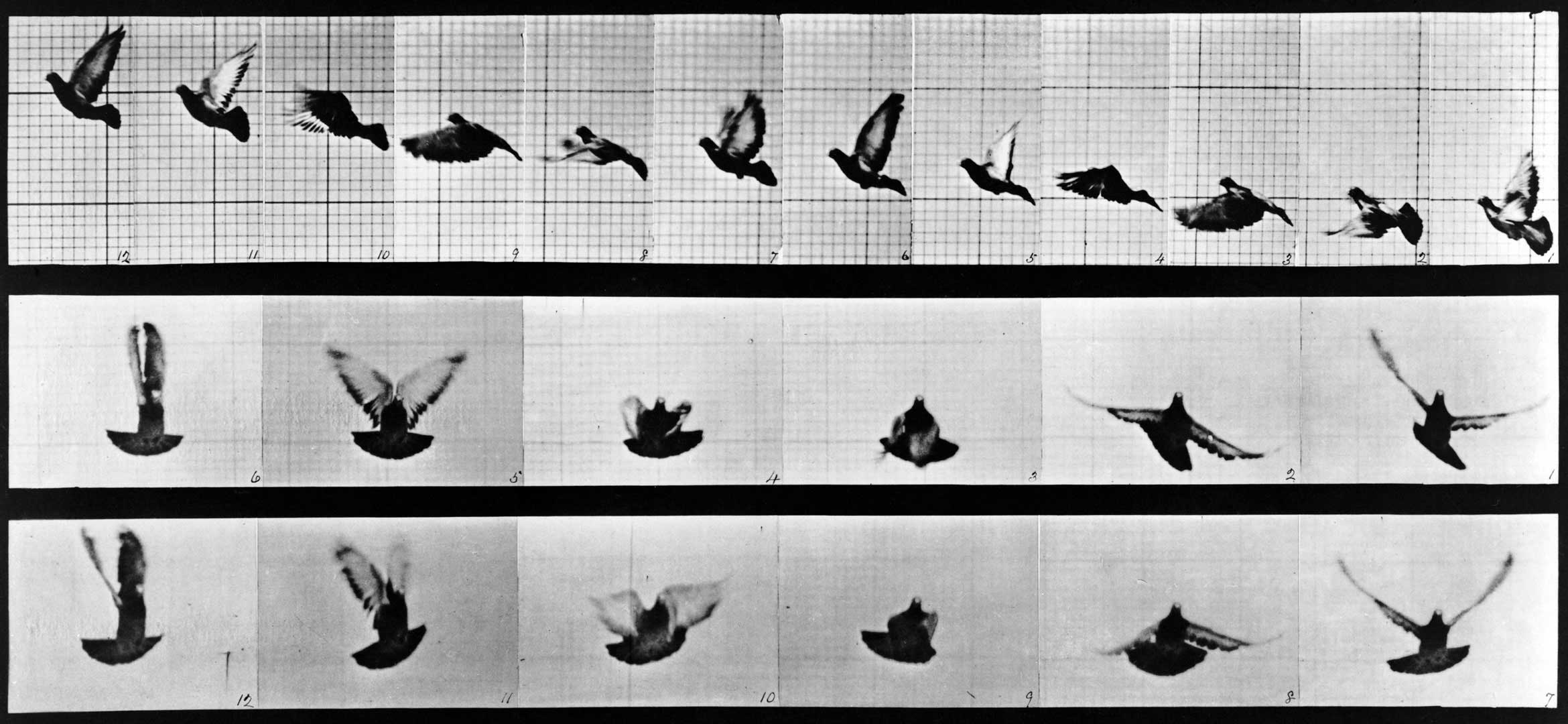Short description of the topic
Children learn the basics of moving images - film. They learn about the first study of a horse in movement made by Eadweard Muybridge which led to the beginnings of cinema. They make their own study of movement and understand that the film is a sequence of frames in motion.
Learning outcomes
-
Competencies
- Media competence: understanding the basics of animation
- Motor competence: developing gross motor skills
-
Target group
5 years and up- Small groups
-
Required materials
- Scissors
- Glue
- Printed study of The Horse in Motion
- A camera or smartphone that allows multiple shots in a row
-
Materials
- Photo series The Horse in Motion
- Video The horse in motion (https://www.youtube.com/watch?v=heRuLp7CyTM)
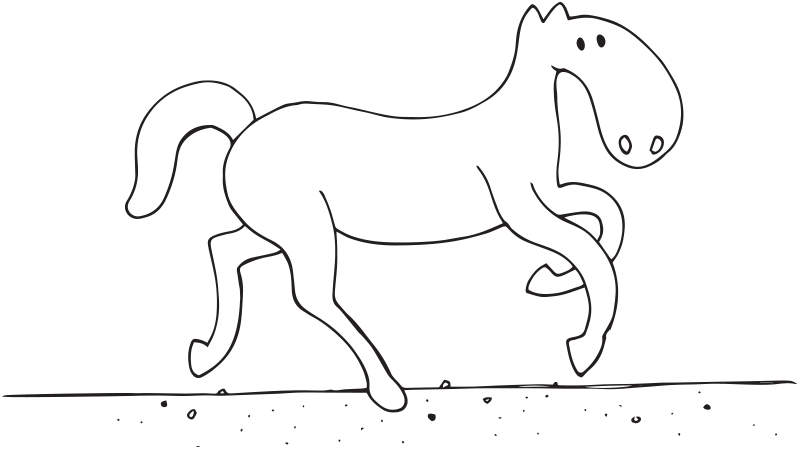
Download
(.pdf 452.05 KB)
Description of the activity (step by step)
Preparation:
Show to the children photographs of the study of a running horse taken in 1878. Explore the photos together and ask children questions: What do the photos show? Do they notice anything special? Do they think the photo is new or old? Why? Briefly describe the origin of the photographs. Observe the photos together again and find out if the horse has all its legs in the air at the same time. Ask children about their own movement. Do they ever have both feet in the air when they walk? What about when they run? Jump?
Implementation:
Remake the photo-experiment with the children. The children should work in pairs or small groups. A child should be a photographer and the others should perform movement sequences, such as high jump, long jump, pass, etc. Then transfer the photos to the computer and view them together. Together with each photographer, decide on one series of movement photos and print it as a grid of thumbnails. Children can cut out their pictures and paste them in a sequential row.
Reflection:
Take a look at the resulting series of photos together and talk about them. Guide them in the direction of a conversation about moving images - films. If you take the photos on a smartphone, you can quickly and easily create a gif from the photo sequences to demonstrate how a movie is created from a sequence of photos. Then watch the animated clip of Muybridge’s horse in motion together. Eadweard Muybridge, the photographer who took photographs of animals in motion, is considered a pioneer of the cinema. Explain that the film is nothing more than a sequence of images displayed one after another.
Variations and additional ideas
Muybridge has left behind a large treasury of movement studies ranging from shots of elephants, ostriches, and monkeys to the movements of various athletes. Introduce the children to a series of movements of other animals by Muybridge. Compare different ways of moving animals - running, walking, crawling, and flying. You may also encourage children to emulate them.
Make a flipbook!
Complement the activity: Zoetrope
Background information and didactical perspective
A wealthy horse lover from the 19th century was keenly interested in whether a horse at gallop ever had all its legs at once in the air. Since this issue could not be resolved by observation alone, as the movement was simply too fast, he hired a photographer who envisioned a special layout. This photographer was Eadweard Muybridge. Muybridge set up 24 photo cameras on the equestrian track. They were connected by ropes stretched across the track. As the horse ran past, he tore the leash and triggered the camera. This is how the series of photographs "Horse in Motion" was created. In 1879, Muybridge invented the Zoopraxiscope, with which he was able to project a sequence of photographs onto a screen. Muybridge is thus considered a pioneer of the cinema.
A flipbook is a booklet that contains a series of pictures or photos that vary slightly from page to page. If we scroll through the pages very quickly, just by dropping them between our fingers, it seems as if we are observing movement or animation.
How do we make a flipbook in kindergarten? Children can use photos taken during the above activity, draw Muybridge movement sequences, or draw pictures. Print the selected photos as small thumbnails on a single sheet. Have the children cut out the photos and sort them in the correct order. Clip them on the left edge with a stapler and the fun can begin!
